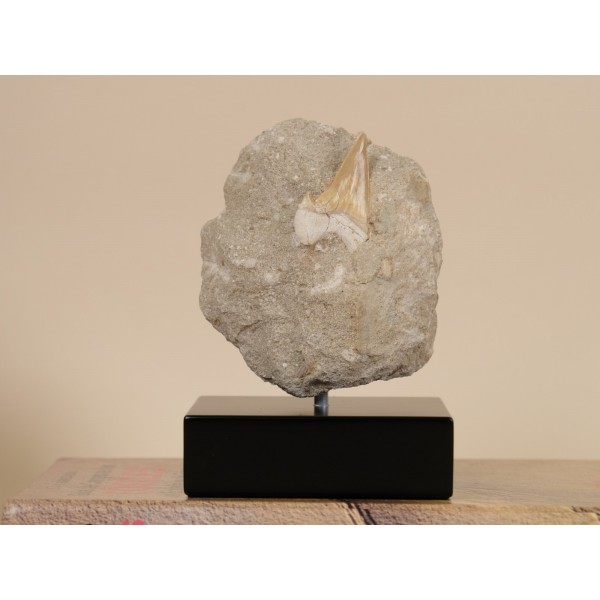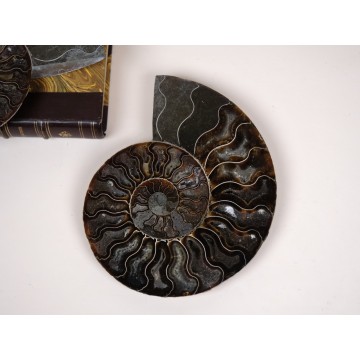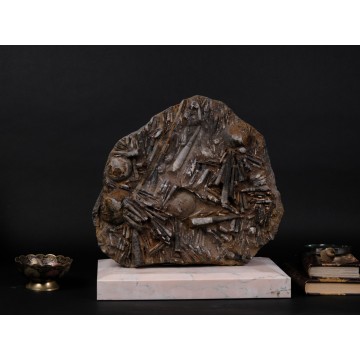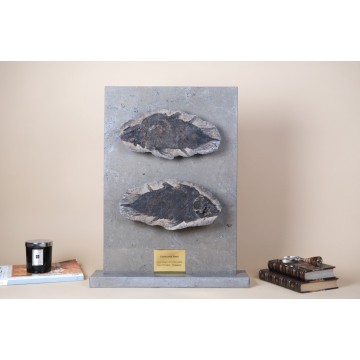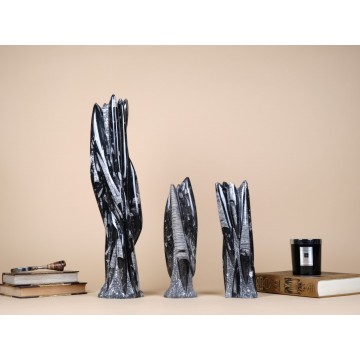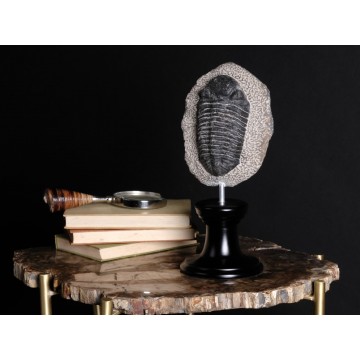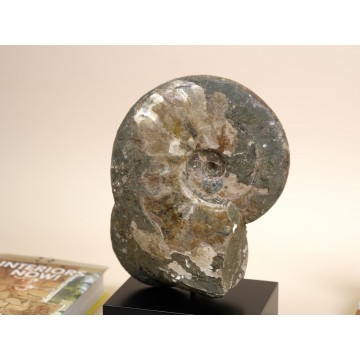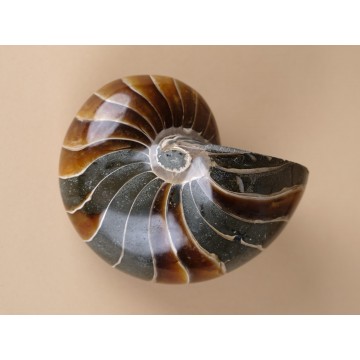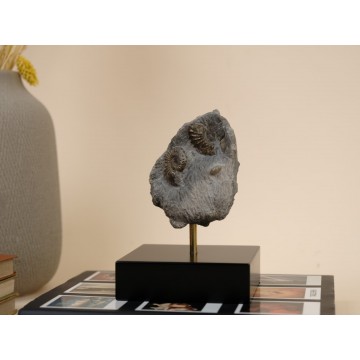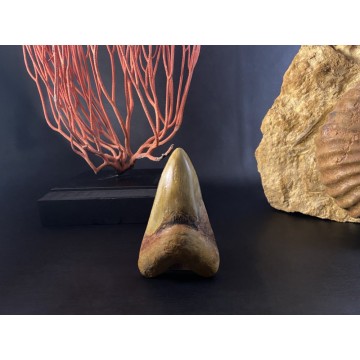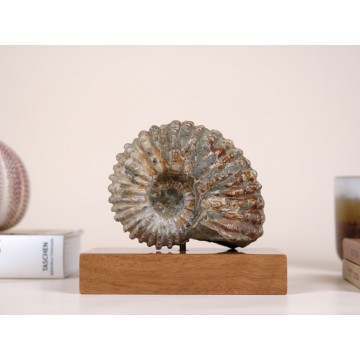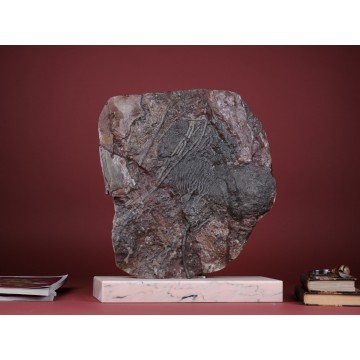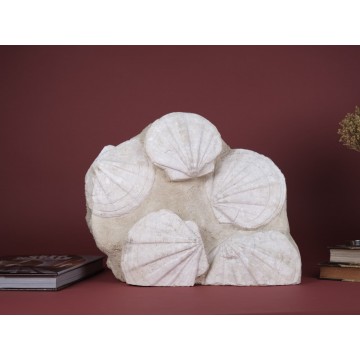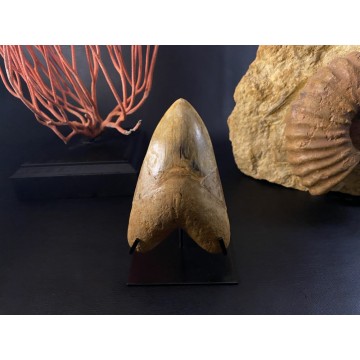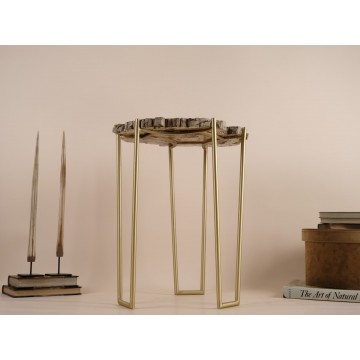Opalized Ammonites
Handmade brass display with three Opalized Ammonites from Madagascar fields, Albian Period (100–140 million years old). When opalized can be also called as Ammolite is an opal-like organic gemstone found in various placed in the North America and Madagascar. Ammolite is made of the fossilized shells of ammonites, which in turn are composed primarily of aragonite. The microstructure of the mineral is inherited from the shell.
It is one of few biogenic gemstones. Other more commonly known biogenic gemstones include amber and pearl. Ammolite was officially recognised as gemstone species in 1981. Ammolite “opalization” is a term used to express the similarity between the two minerals due to the spectrum of colours it displays. Usually red and green, whilst, blue or purple are rare due to the latter's fragility.
A unique One of a Kind signature piece.

